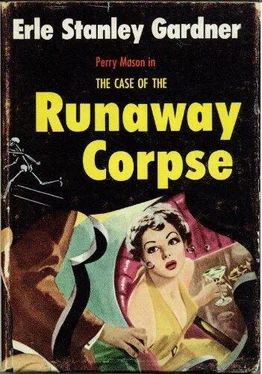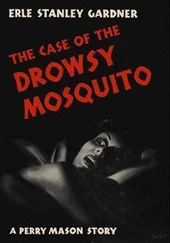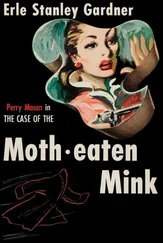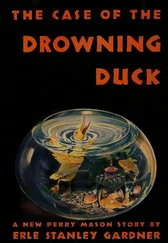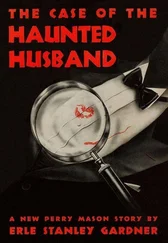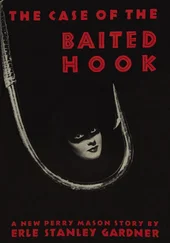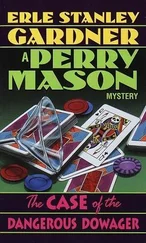Erle Gardner - The Case of the Runaway
Здесь есть возможность читать онлайн «Erle Gardner - The Case of the Runaway» весь текст электронной книги совершенно бесплатно (целиком полную версию без сокращений). В некоторых случаях можно слушать аудио, скачать через торрент в формате fb2 и присутствует краткое содержание. Год выпуска: 0101, Жанр: Классический детектив, на английском языке. Описание произведения, (предисловие) а так же отзывы посетителей доступны на портале библиотеки ЛибКат.
- Название:The Case of the Runaway
- Автор:
- Жанр:
- Год:0101
- ISBN:нет данных
- Рейтинг книги:5 / 5. Голосов: 1
-
Избранное:Добавить в избранное
- Отзывы:
-
Ваша оценка:
- 100
- 1
- 2
- 3
- 4
- 5
The Case of the Runaway: краткое содержание, описание и аннотация
Предлагаем к чтению аннотацию, описание, краткое содержание или предисловие (зависит от того, что написал сам автор книги «The Case of the Runaway»). Если вы не нашли необходимую информацию о книге — напишите в комментариях, мы постараемся отыскать её.
The Case of the Runaway — читать онлайн бесплатно полную книгу (весь текст) целиком
Ниже представлен текст книги, разбитый по страницам. Система сохранения места последней прочитанной страницы, позволяет с удобством читать онлайн бесплатно книгу «The Case of the Runaway», без необходимости каждый раз заново искать на чём Вы остановились. Поставьте закладку, и сможете в любой момент перейти на страницу, на которой закончили чтение.
Интервал:
Закладка:
In response to a specific question by Vandling he stated that an attempt had been made to find tracks but that because of the tracks of the boys and of Martin Medford at the time of his digging there had been no footprints which had been deemed significant.
“You may cross-examine,” Vandling said.
“Under the circumstances,” Mason said, “I will ask no questions at this time.”
“Of course,” Vandling pointed out, “my stipulation with counsel was for the purpose of enabling him to protect the rights of his client and not to be caught by surprise. It was not a blanket invitation to pass up all cross examination until all of our case had been presented and then recall witnesses.”
“I understand,” Mason said. “I can assure counsel I will not take advantage of his courtesy in the matter. I will recall witnesses only when it seems there is some specific point to be gained by so doing.”
“Thank you,” Vandling said. “That’s all, Sheriff.”
Dr. Milton Hoxie was the next witness. He gave his qualifications as a physician and surgeon and toxicologist. He testified that he had been called on to perform an autopsy at the morgue on the evening of the thirteenth, that circumstances had prevented him actually performing the autopsy until nearly midnight, when he had been able to leave his practice long enough to perform the autopsy.
He had found the body of a man five feet eight inches tall, weight one hundred forty pounds, who was about thirty-five years of age, who had arteriosclerosis but who had apparently died of poisoning. He had performed certain tests and had detected the presence of a specific poison. He had come to the conclusion that death had been caused by the ingestion of cyanide of potassium. In his opinion at the time of the autopsy the man had been dead for perhaps twenty-four to thirty-six hours.
“Cross-examine,” Vandling said abruptly.
“You made a specific test for cyanide of potassium?” Mason asked.
“Yes, sir. Hydrocyanic poisoning.”
“And other poisons?”
“I tested for arsenic.”
“Did you find any arsenic?”
“Not in significant quantities. No, sir.”
“Did you find any quantity at all?”
“Not enough to be of any medical significance.”
“Did you find any other poisons?”
“I did not. No, sir.”
“Were the vital organs removed from the body?”
“They were. Yes, sir.”
“And what was done with them?”
“They were sent to a laboratory at the University of California for additional examination.”
“And has a report been received from the University?”
“Not to my knowledge.”
“Then you don’t know that the man met his death because of the poison you have mentioned?”
“I know that I found enough poison present to result in death and therefore I assume that death was caused by that poison.”
“Why did you send the organs to the University of California?”
“Because I wanted to have a more complete check made.”
“Because you were looking for some other poison?”
“I thought it would be a good plan to check and see if there was any other poison.”
“Then you weren’t satisfied that death was caused by potassium cyanide?”
“Certainly I was. But I wanted to see if there were any contributing factors—perhaps there were indications of knockout drops, so-called, or some barbiturate by which the resistance of the man might have been lessened so that the poison could have been administered.”
Mason thought that over frowningly.
“Proceed,” Judge Siler said.
“Just a moment, Your Honor,” Mason said. “I think this opens up an entirely new field here.”
“I don’t see how,” Judge Siler said.
Mason said. “It is apparent that originally the sheriff’s office had some theory as to the manner in which the poison was administered and that something in the findings of Dr. Hoxie was not in accordance with that theory.”
“Well, I certainly fail to see it,” Judge Siler said. “Proceed with your examination.”
“Certainly,” Mason smiled. “Did you look for evidences of chocolate in the man’s stomach, Doctor?”
“I did. I tried to check the stomach contents carefully.”
“And what did you find?”
“I found that the man had died approximately an hour after ingesting a meal of bacon and eggs. I did not find any appreciable amount of chocolate.”
“Did you test the body for blood alcohol, Doctor?”
“I did.”
“What did you find?”
“I found 0.15 per cent of alcohol.”
“Can you interpret that in terms of its medical significance?”
Dr. Hoxie said, “According to the authorities, at 0.1 percent a person is normal according to ordinary observation. He has, however, begun to show certain evidences of medical intoxication. At 0.2 per cent he has become intoxicated. He has emotional instability. His inhibitions are greatly diminished. At 0.3 per cent there is a very definite confusion, a staggering gait, a blurred speech. At 0.4 per cent there is stupor, a marked decrease in response to external stimuli and approaching paralysis. From 0.5 per cent to 0.6 percent there is complete coma and impairment of circulation. There is danger of death which is virtually inevitable after 0.6 percent of alcohol is in the blood. C. W. Muehlberger has prepared an interesting chart. 0.1 per cent is called ‘Dry and Decent.’ 0.2 percent ‘Delighted and Devilish.’ 0.3 percent ‘Dizzy and Delirious.’ 0.4 per cent ‘Dazed and Dejected.’ 0.5 percent ‘Dead Drunk.’”
“So in this body in which you found 0.15 per cent of alcohol, what are your conclusions with reference to intoxication?”
“The man had begun to be intoxicated. He was entering the stage described by Muehlberger as ‘Delighted and Devilish.’”
“He would be feeling the effects of alcohol?”
“He would.”
“He would be showing some manifestation of those effects?”
“In all probability to the casual observer. Certainly to the trained observer.”
“I take it, Doctor,” Mason said casually, “that while you were primarily interested at the time of the post-mortem examination in determining the cause of death, you took some steps to identify the body?”
“That is right. I may state that I was present when some steps were taken.”
“There is no question in your mind but what the body was that of Edward Davenport?”
“No question at all.”
“Let me ask you a hypothetical question, Doctor. Assuming that this man had been poisoned by cyanide of potassium taken in the form of a candy such as was found in the box of candy located among Mr. Davenport’s effects at the motel in Crampton, wouldn’t death have been almost immediate?”
“It would have been very rapid.”
“There was, in other words, enough cyanide in each piece of candy to have resulted in almost immediate death?”
“Not in each piece of candy, Mr. Mason. Some of them contained arsenic and—”
“I’m not trying to trap you, Doctor. I am referring to the candies which contained cyanide.”
“That is correct. Yes, sir.”
“The development of symptoms and unconsciousness comes very rapidly after the ingestion of doses of cyanide such as you found in the candies which did contain cyanide?”
“Yes, sir.”
“Now then, Doctor, if the decedent had met his death from eating a piece of that poisoned candy, wouldn’t you have found some chocolate in his stomach?”
“Well, there, of course,” Dr. Hoxie said, “is a puzzling situation. I would assume so.”
“And did you find such evidences of chocolate?”
“No.”
“You would have expected to find some if the man had eaten a piece of poisoned candy?”
Читать дальшеИнтервал:
Закладка:
Похожие книги на «The Case of the Runaway»
Представляем Вашему вниманию похожие книги на «The Case of the Runaway» списком для выбора. Мы отобрали схожую по названию и смыслу литературу в надежде предоставить читателям больше вариантов отыскать новые, интересные, ещё непрочитанные произведения.
Обсуждение, отзывы о книге «The Case of the Runaway» и просто собственные мнения читателей. Оставьте ваши комментарии, напишите, что Вы думаете о произведении, его смысле или главных героях. Укажите что конкретно понравилось, а что нет, и почему Вы так считаете.
